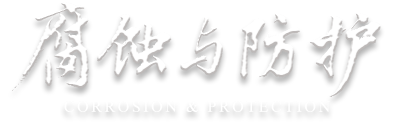Abstract:
Some of the iron cultural relics in the collection of Hubei Provincial Museum are severely corroded, resulting in layered peeling, damage, cracks, deformation and other diseases. Modern detection technologies such as X-ray Fluorescence spectrometer (XRF), laser Raman spectrometry, scanning electron microscopy-energy dispersive spectroscopy (SEM-EDS), X-ray diffraction (XRD), etc. were used to analyze the morphology, elements, composition and corrosion mechanism of these iron corrosion products. The results show that this batch of iron utensils generally contained chlorine (Cl), and the higher the Cl content, the greater the degree of damage to the appearance of the utensils, and the thicker, fluffier, and more porous the rust layer. In addition, among this batch of ironware, the rust layer of the iron without Cl was clearly divided into three layers, and the inner layer of rust was relatively dense, while the outer layer was relatively loose. α-FeOOH、α-Fe
2O
3、γ-Fe
2O
3、Fe
3O
4 and γ-FeOOH were detected in all three layers of rust products, with the first four being stable harmless rust and the latter being unstable harmful rust. The rust layer of Cl containing ironware also exhibited obvious layering, and the outer and middle layers of rust products were relatively loose, mainly composed of α- FeOOH β-FeOOH、γ-FeOOH、γ-Fe
2O
3. The inner layer rust products were slightly dense, mainly composed of α-FeOOH γ-FeOOH、α-Fe
2O
3、γ-Fe
2O
3. Among them, the rust products β - FeOOH and γ - FeOOH were unstable and highly active, and would continue to grow repeatedly on the surface of the iron, causing serious diseases such as layered peeling, cracking, and fracture of the iron. In addition, the content of β-FeOOH in the corrosion products of ironware are containing Cl was often high, and its content was closely related to the presence of Cl. There are significant differences in the composition and content of the rust products of this batch of iron tools. The rust products of iron tools without Cl had less harmful rust content, while the rust products of iron tools with Cl content increased with the increase of Cl content. The ratio of harmless rust to harmful rust in the rust layer (
wharmless rust/
wharmful rust) would decrease. Therefore, the Western Han iron knife with the highest Cl content had a minimum of 0.40
wharmless rust/
wharmful rust while the iron knife without Cl had a maximum of 6.63
wharmless rust/
wharmful rust.

 下载:
下载: